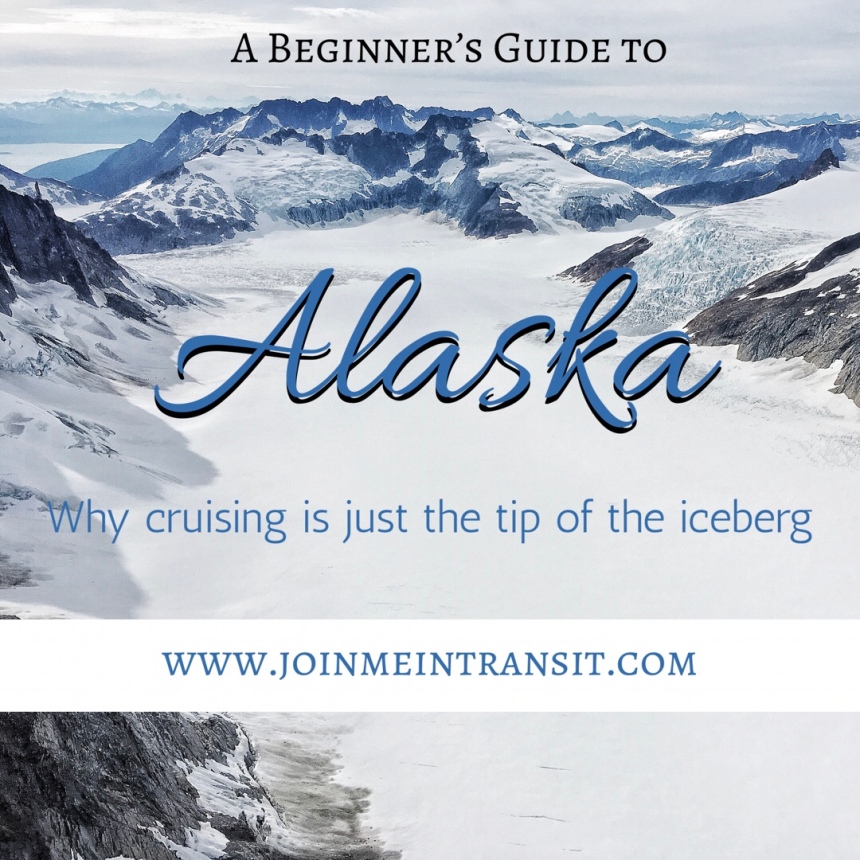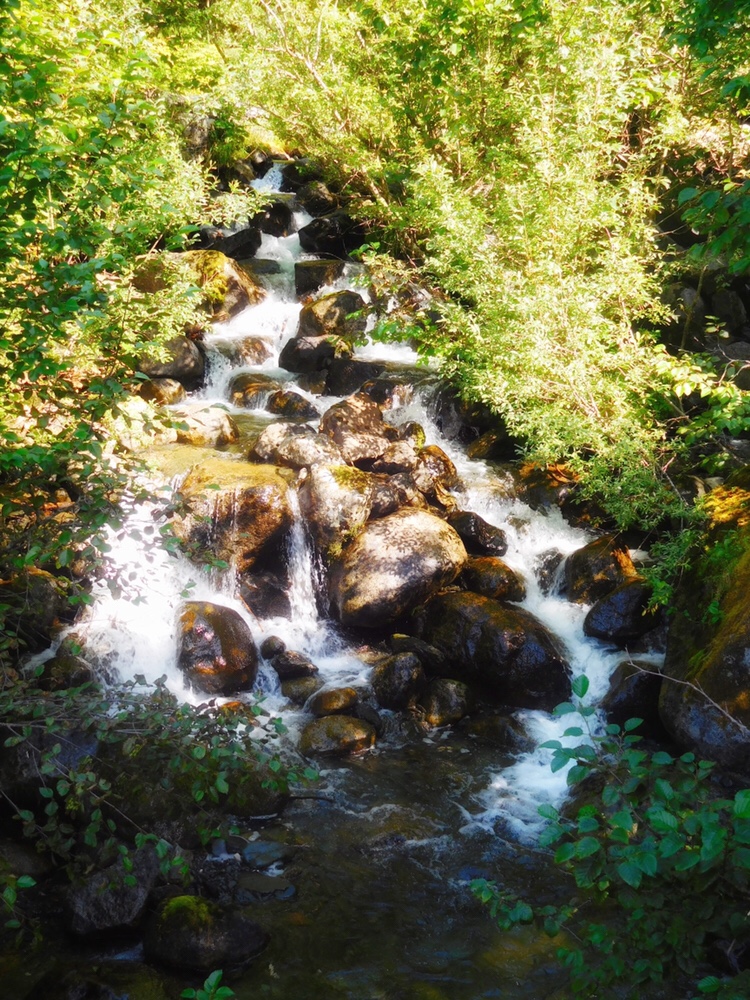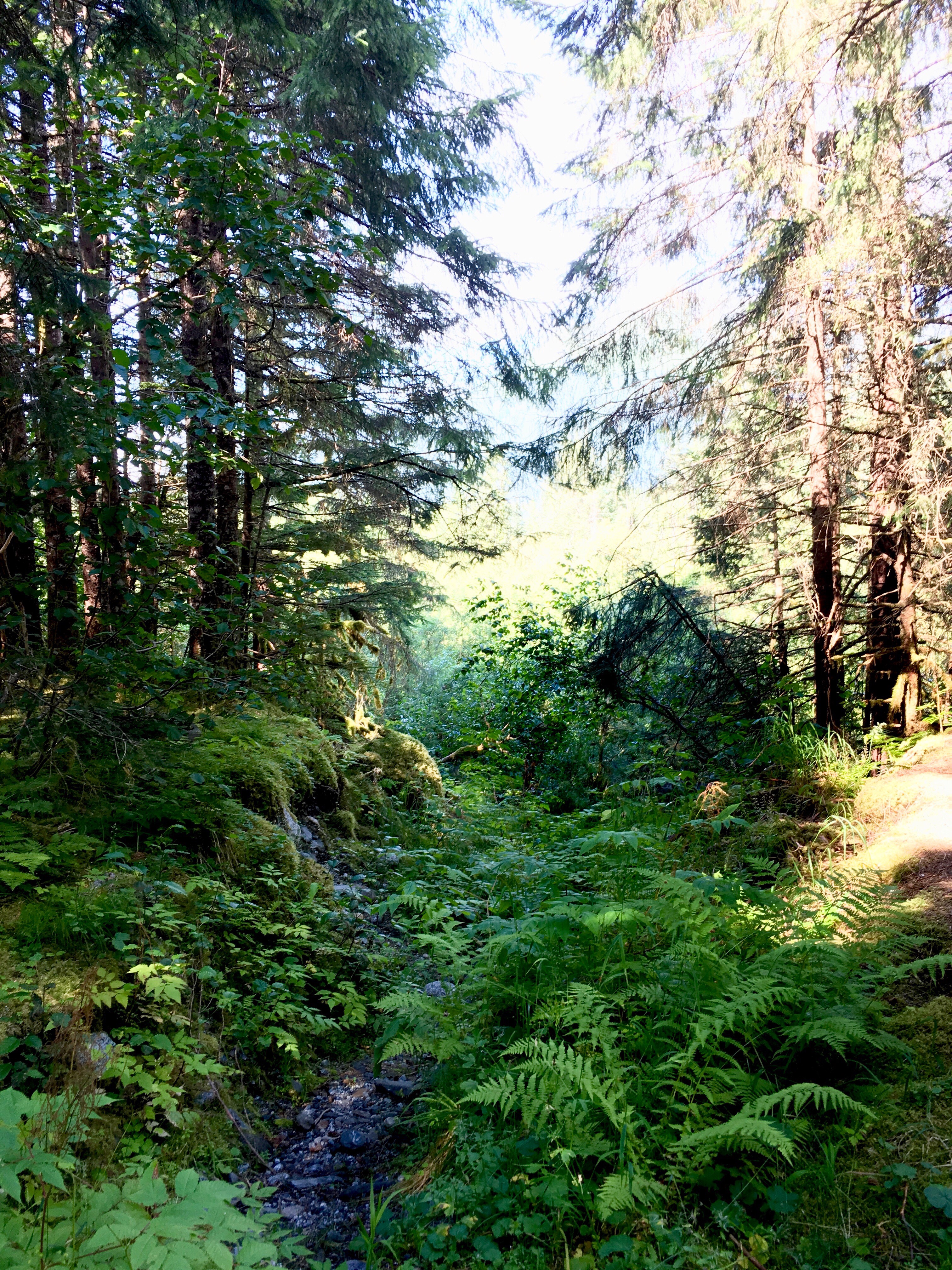A Beginner’s Guide to Alaska: America’s Last Frontier
Author’s note: This post is the combined account of four posts in a series covering cruising through southeast Alaska’s Inside Passage.
I’ll never forget what it felt like that afternoon, flying over a sea of ice and promontories that pierced the sky below our floatplane. It was as if I had been transported to a time before human existence, to when the earth had frozen over, leaving behind only a desolate expanse of ice.
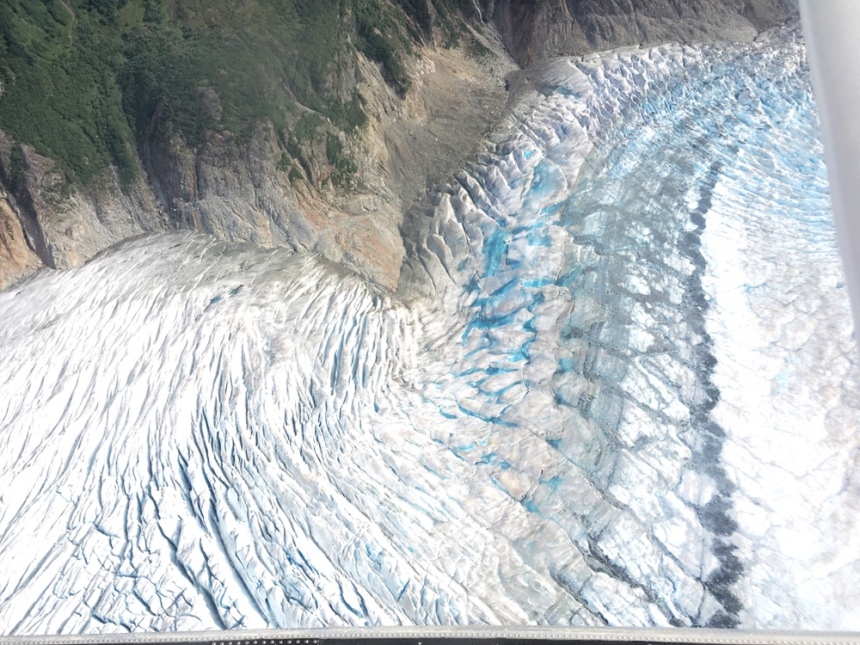
Etched into this seemingly boundless blanched landscape were bright cyan ridges, almost turquoise in some parts, creating intricate patterns and folds, and offering glimpses into the glaciers’ depths.
This was the Alaska of which I had dreamed, and it was breathtaking to behold.
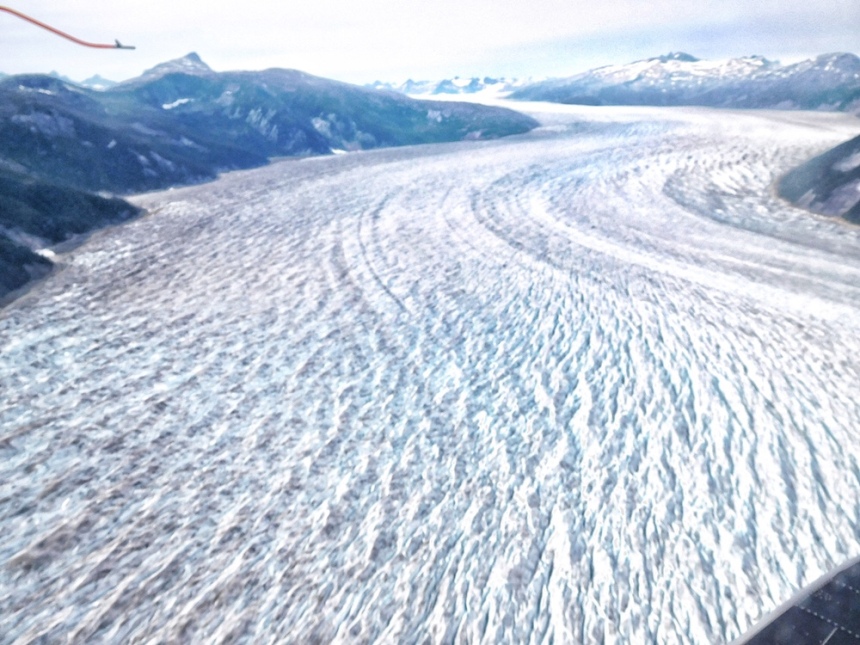
My family and I spent a one-week vacation in August cruising through southeast Alaska’s Inside Passage, which took us to Hoonah (Icy Strait Point), the Hubbard Glacier, Juneau and Ketchikan. Through the week, we enjoyed the amenities on board the Celebrity Infinity ship and the scenery of the Tongass National Forest, fishing villages, and the mountains of Glacier Bay National Park that surrounded us. The views were wild and unsullied by human interference. I soon realized this tiny sliver along the edge of Alaska we were witnessing was only a fraction of the treasures that America’s last frontier held. However, it was enough to convince me that a longer, more extensive visit to other parts of the state would be required to truly appreciate and experience all that Alaska has to offer.
Here is a beginner’s guide of what to expect from Alaska, and reasons why a cruise is a great introduction to America’s 49th state.
Tip of the iceberg
I knew Alaska was big. It didn’t occur to me just how big until I saw our cruise ship’s itinerary and studied the landscape during that week. To put it into perspective, a seven or even 10-day Alaskan cruise only goes as far as Skagway, or at best, Anchorage(one-way):
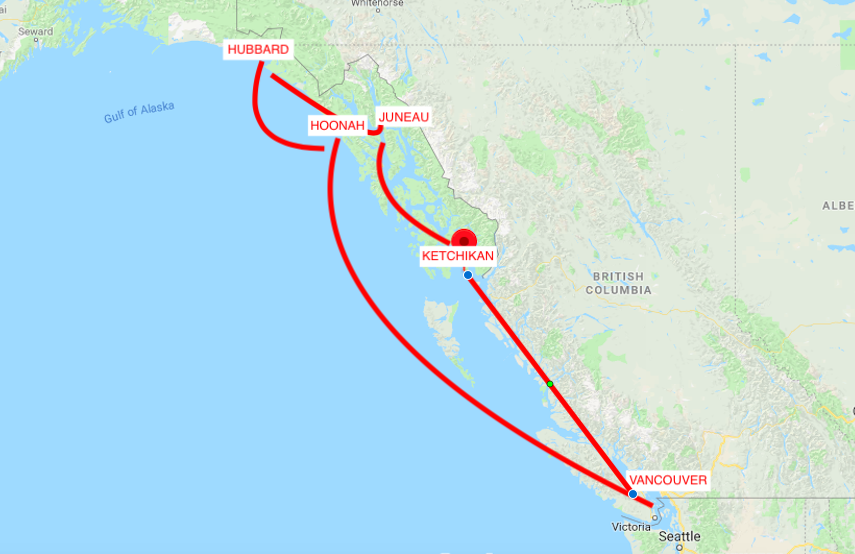
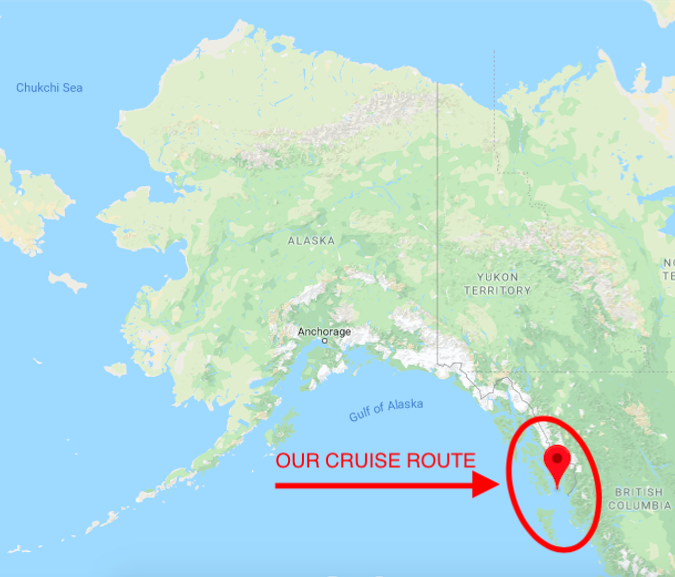
As the largest state in the U.S., Alaska could fit the state of Texas twice, or, to put it into terms that are more relevant to me, it could fit Florida 10 times, or Georgia 11 times, according to an interactive graphic available at Alaska.org. That’s huge! Across this terrain you’ll find rocky shores, temperate rain forests, glaciers, ice fields, mountains, lakes, tundras…. The list goes on.
When my parents first told me they were planning a family vacation to Alaska, my mind naturally went to Denali (Mt. McKinley) first. I figured that was the main attraction in Alaska.
While Denali is one of Alaska’s key natural assets, it is not the only mountain or natural feature worth seeing in these parts. Furthermore, to visit Denali from a cruise, you have to venture much deeper inland by adding on land tours (not just a daylong excursions) and these can be coordinated with the 12- and 16-day cruise + tour combinations.
Still, there are many other stunning mountain ranges, national parks and land features to see in Alaska through a cruise vacation, even if the highest North American peak is out of reach.
Hubbard Glacier
The focus of this Celebrity Infinity cruise was the Hubbard Glacier, a tidewater glacier that spans nearly six miles across where it touches the ocean in Disenchantment Bay. Tidewater glaciers are those that form in the valleys between mountains and work their way down to the ocean, according to the National Snow and Ice Data Center. The Hubbard Glacier is part of America’s largest national park, the Wrangell St. Elias National Park, which gets its name from the St. Elias mountain range. Here, at water’s edge, Hubbard meets the Valerie Glacier.
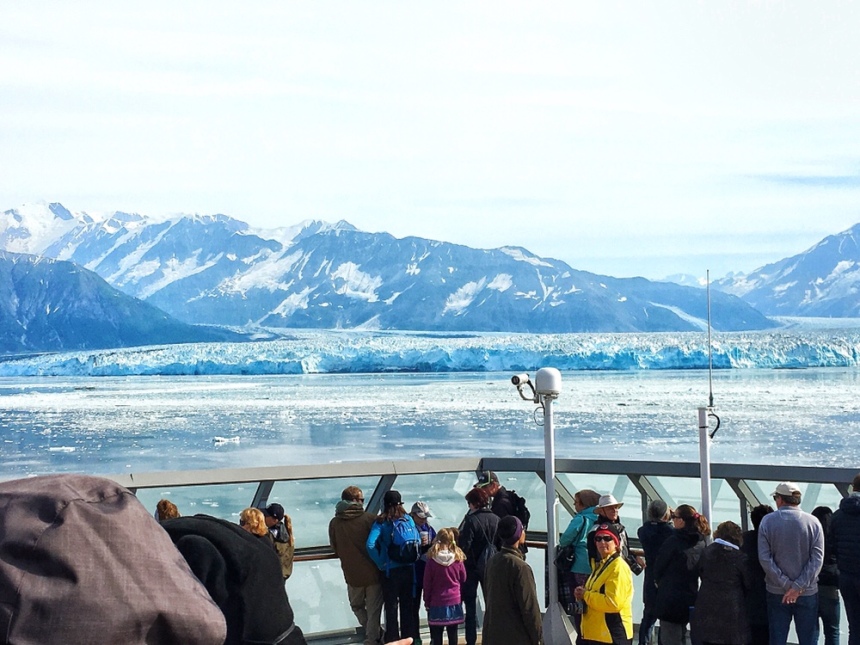
On the fourth day of the cruise, our ship stopped in the bay for about an hour– roughly a half-hour on each side of the ship so people camped on either end of the vessel would be able to view the glacier fully. That morning, the ship’s resident naturalist, Mickey “Live” Richardson, called everybody out to the ship’s viewing decks, providing information about Hubbard and the surrounding land features. If you looked closely along the shores of Disenchantment Bay, he said, you might even see brown bears hunting for salmon. August is the popular season for salmon in Alaska, especially halibut and silver salmon, according to Alaska.org, a travel guide and visitor resource maintained by Alaska Channel.

I had piled on sweater upon sweater, and even a windbreaker, hat and gloves, when I stepped onto the fourth-level deck outside the Rendez-Vous lounge. Still, a mile from the glacier the cold bit at my face. The wind caused my eyes to tear, so I rushed back inside to view from behind the glass doors, while my husband, ever the photographer, stood relentlessly on the deck to not only snap photos, but to take in unfiltered views of the glacier.
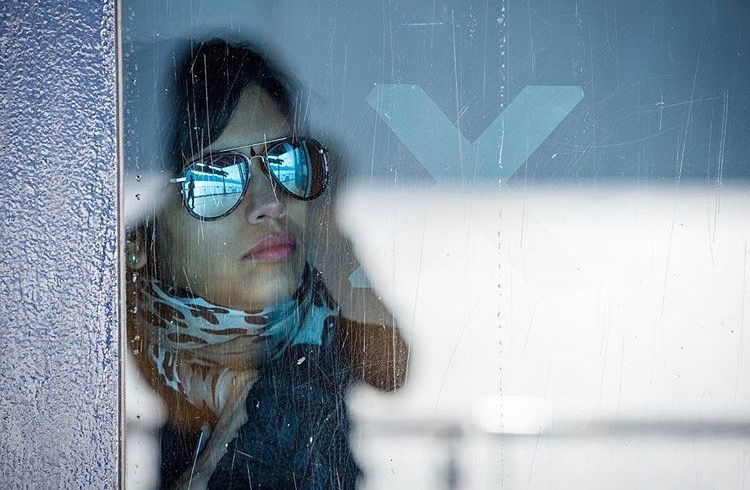
From the ship, you could get an unobstructed view of Hubbard wedged in the valleys between Mt. Vancouver, Mt. Hubbard, and Mt. Seattle. Even at this distance, you hear what sounds like thunder crackling, only to see seconds later large pieces of ice falling away from the glacier and into the water below. This far away, when you hear the noise and see it in action, it almost feels like you’re watching a slow motion video. This phenomenon is known as calving, and it’s how icebergs are formed. These icebergs can be as high as ten stories.

Calving is common for the Hubbard Glacier, as it continues to advance. Hubbard Glacier is unique because it is one of the few glaciers that continues to grow and advance with ice accumulation, according to the USGS.Glaciers go through back-and-forth stages of advancing (gaining ice) and retreating (losing ice).
Glacier Bay 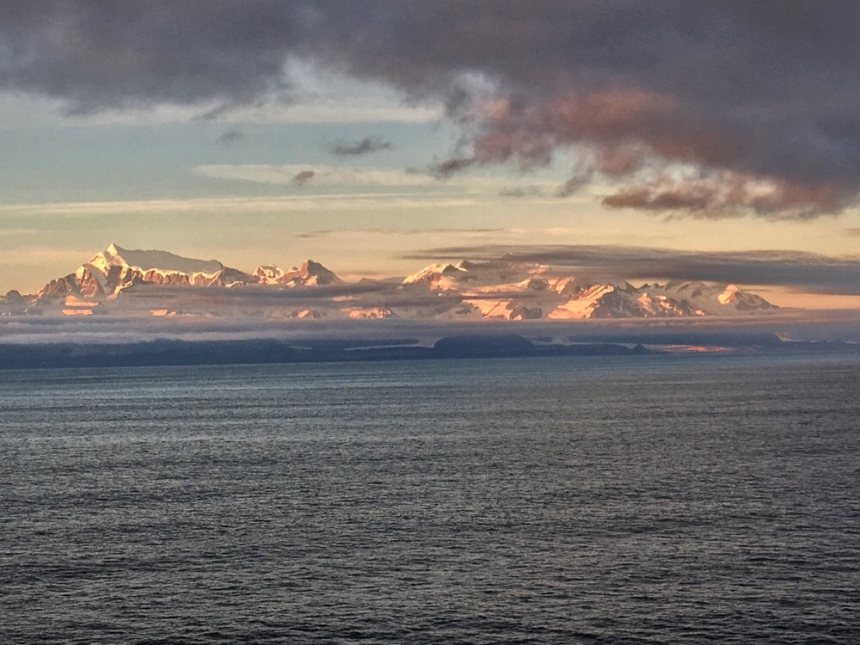
As you cruise the southeast passage to and from Hubbard, you also pass by Glacier Bay National Park, where the snow-capped peaks are so mesmerizing that they glow in the copper hues of the setting sun. One night, after a formal dinner on the cruise, my husband and I walked out on the deck to enjoy the sunset. This was possible so late in the day because the sun stays out in this part of Alaska for up to 18 hours in the summer. (However, this also means that seeing aurora borealis on a southeast Alaskan summer cruise is very rare, though here in Glacier Bay, is your best chance of seeing it if you stay up late enough). 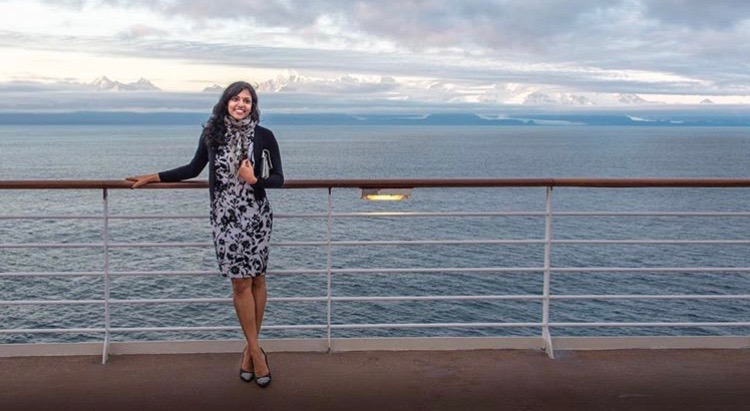
Not many other people were out on the deck as they were still at dinner, or at one of the live evening shows in the cruise’s theater. It was so peaceful, and it made me wonder what it must have been like for the first explorers of this region to set eyes on these iridescent peaks at sunset.
Plus, if we stood long enough on the deck and watched intently, we might even spot a break in the water and a spray of mist from the surface.
Whale watching
Summers in Alaska are the best time to see the humpback whales. After giving birth to and nursing whale calves in the winter near Hawaii and Mexico, the whales travel back to feed themselves and their young in Alaska for the summer. Our many excursion guides told us that by this point, female humpbacks have lost at least 1/3 of their body weight. Their food consumption happens only in the summer when they are in the northern regions like Alaska, because as they journey back south and nurse their young, they are essentially fasting. Food in the southern latitudes is scarce for them, so all of their energies at that time are focused on breeding, giving birth, and nursing.
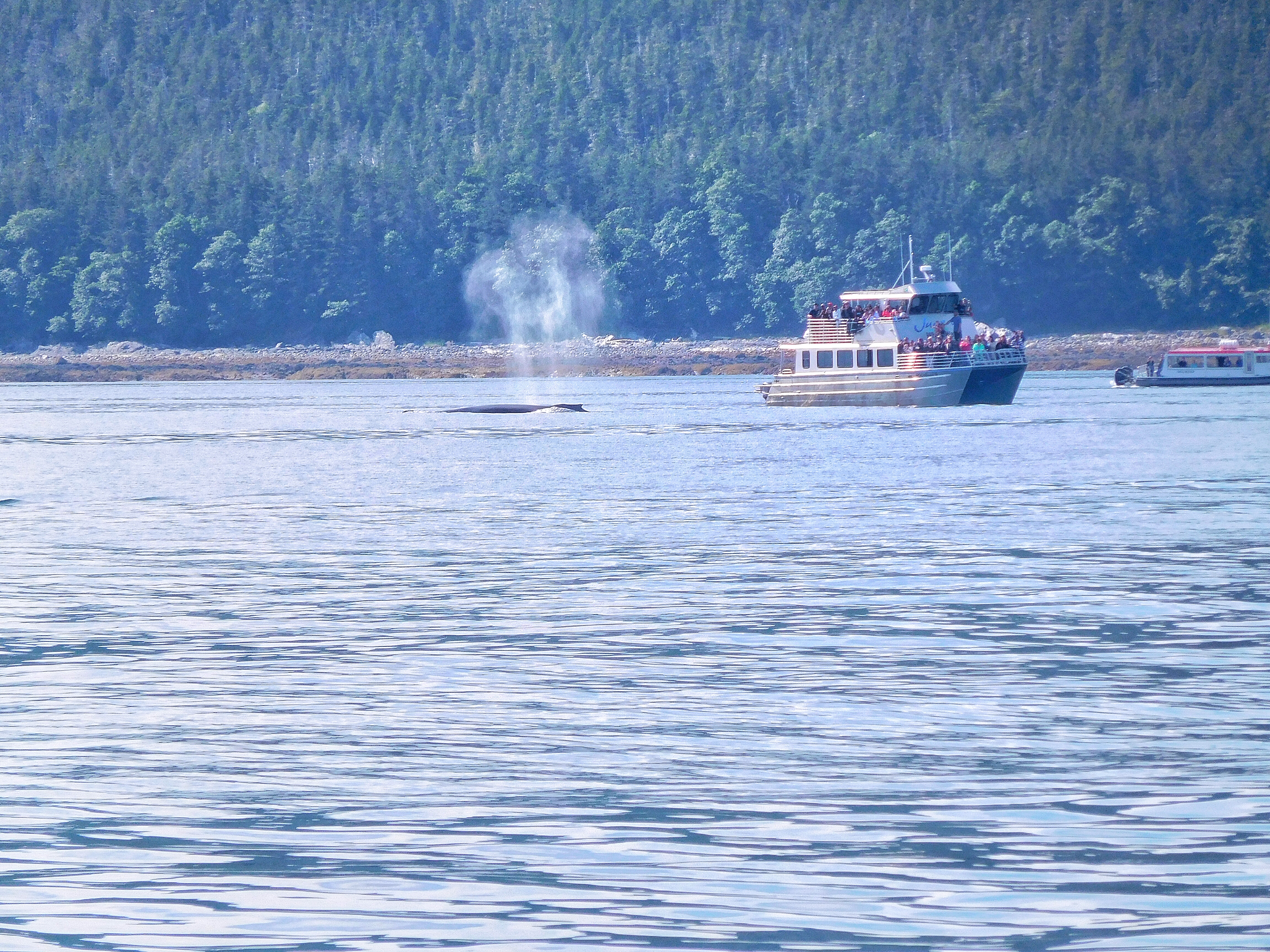
That means this journey back north by the mother humpback is incredible. She has been fasting for months while nursing, and it’s why feeding in the north is such an important task for her. It’s pretty much all the whales do, night and day during the summer. The waters here have become more temperate and are bountiful with krill, a key food source for these filter feeders.
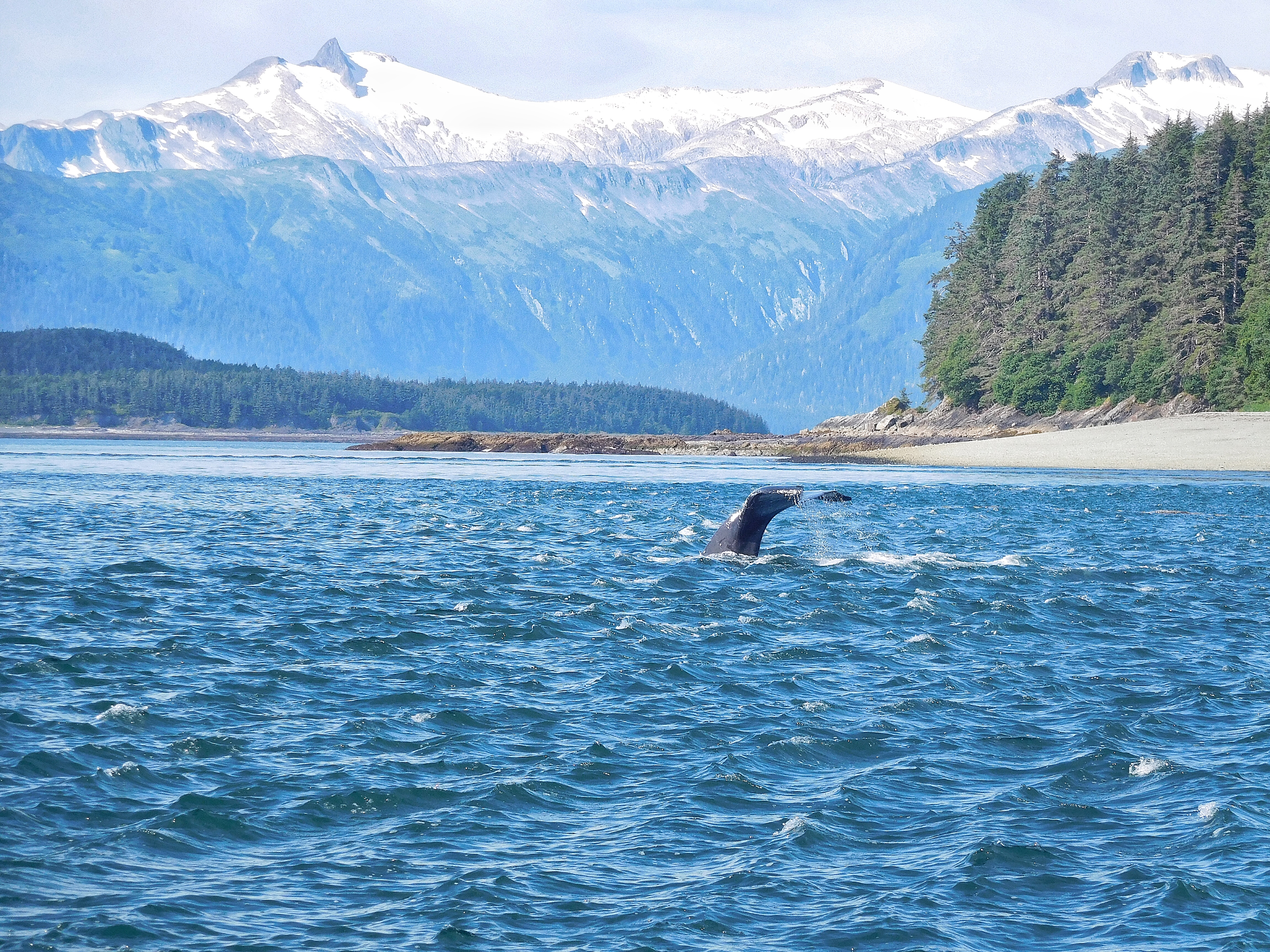
I can now say that I’ve seen humpback whales on both ends of their journey — in Hawaii where they breed, and in Alaska where they feed. Luckily, both times, I’ve also been able to see these majestic creatures breach— that moment when a whale jumps out of the water and splashes back in. Unfortunately, both times were only captured with my own eyes and not with a camera, because they happened so suddenly that I could neither reach for my camera in time nor snap the photo quickly enough. I suppose these moments will only be saved in my memory, and you’ll just have to believe me.

We saw whales during three of the four excursions we took while in Hoonah, Juneau and Ketchikan. One of the most impressive instances was in Juneau, which was swarming with whales. As we looked out across the channel in search of the telltale spray from the blowhole— one of the easiest ways to spot whales in the water— we noticed a plume just feet from our boat and a massive dark figure striding alongside and then under it. It reminded me of those fake photoshopped imaged on the Internet, portraying, from an aerial perspective, a blue whale swimming beneath a small paddle boat— except that this was real.
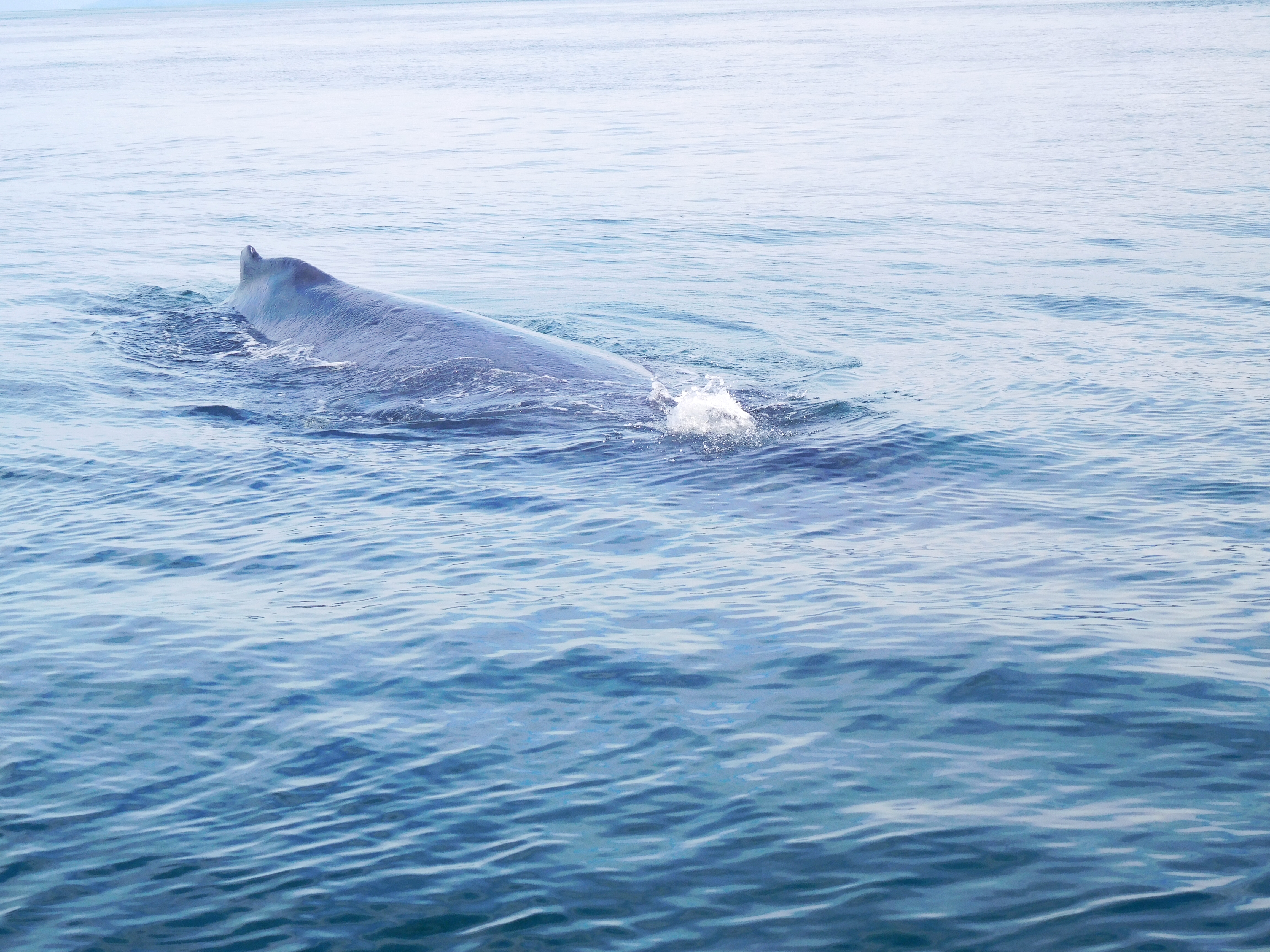
That excitement can only be matched by the morning on the cruise ship when I saw a humpback whale breach Alaskan waters. It was the same day we were to see the Hubbard Glacier from the ship. After waking up, I went to my parents’ stateroom, directly across from ours but slightly larger and with a balcony. Their curtains were open and we were all discussing our plans for the day— where we would camp out on deck to see the glacier, and what activities we would do onboard after. In the middle of our discussion, my mom’s eyes widened and she pointed out the window yelling, “Turn around, turn around!”
I turned, and saw through the window a massive gray animal jutting out of the water and splashing back in within seconds. It happened so fast, but I will never forget it.
Other Marine Life

Clearly, there is no dearth of wildlife in these waters, and you can see many of them right from the ship, though they are more easily viewed through the excursions from the towns where the ship docks.
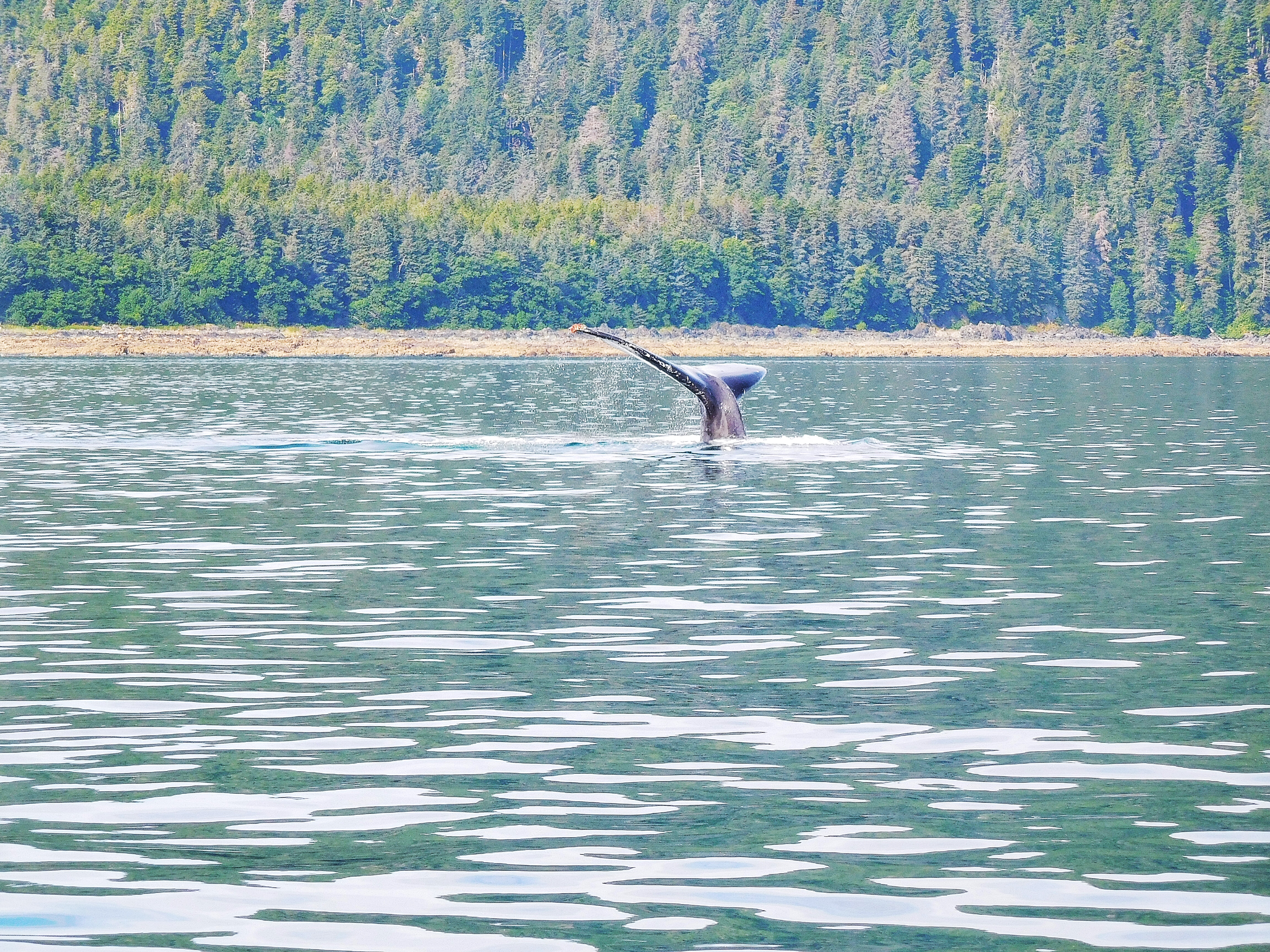
Onboard, as long as you sit patiently and look for breaks in the water, you can see porpoises, orcas, humpbacks and even salmon jumping from the sea. I would recommend getting a set of binoculars for such a trip. We didn’t purchase binoculars since my husbands’ camera zoom lens sufficed, and we were provided free binoculars to use on all of the excursions. However, you can purchase a pair onboard the cruise if you wish.
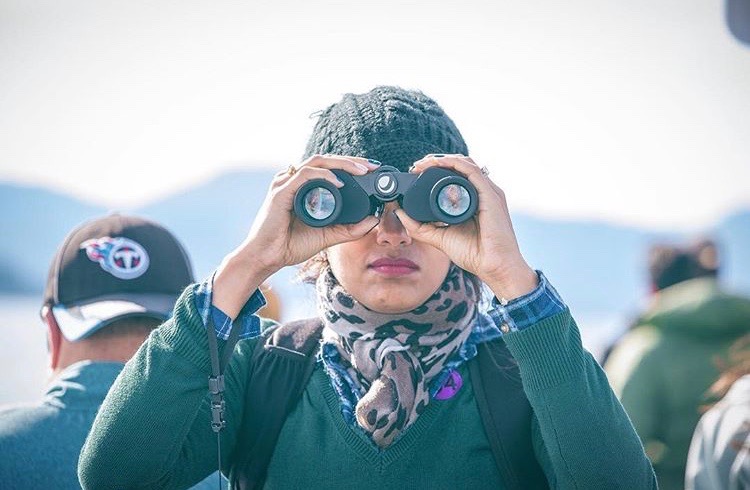
Off of the ship, during our stops in Hoonah, Juneau and Ketchikan, we used the smaller boat excursions to see the sea life a little closer— for better or worse. During another whale-watching tour in Juneau, we saw (and smelled) stellar sea lions lazing about on a channel marker. With all due respect for these animals, even a half-mile from where they were dozing, their stench was repugnant. They were slightly larger than I had imagined, too.

While searching for whales from the fishing village of Hoonah and in the Misty Fjords of Ketchikan, we saw a couple harbor seals and otters (cuddle party, anyone?), the latter floating on their backs temporarily before diving back down into the kelp forests along the coast to find food. They are not the only creatures drawn to Alaska’s shores in search of a meal.
Bears
High-calorie sockeye salmon are a favorite for the coastal brown bears. These bears are larger than their grizzly relatives in Yellowstone and Glacier National Parks (and possibly less aggressive as well) because in Wyoming and Montana the bears are competing more for both land and food, whereas in Alaska, space and food along the coast are more abundant.
By now, you know about my obsession with bears. Since I hadn’t (really) seen a grizzly earlier in the summer during our trips to Yellowstone and Grand Teton, I figured in Alaska I had a much higher chance. But again, I was thinking about the photos I had seen of Katmai and Denali National Parks. Here in southeast Alaska, there are some coastal brown bears, but on the land excursions, spotting black bears is more common, except for some places like Admiralty Island, which has the largest concentration of brown bears in North America.

Our greatest chance of spotting a bear on this vacation was probably in Juneau, along trails near Mendenhall Glacier, or if we had chosen to do an excursion to Admiralty Island, which we did not. Since by this point my family had grown weary of my obsession they felt excursions were better spent seeing other land attractions. Thus, we chose a photo safari tour that started with whale watching and then took us back to land to walk through the rain forests to a viewpoint of the Mendenhall Glacier. Along the trail, which crossed a small creek flourishing with red salmon, we got the putrid whiff of dead fish, finding the source buzzing under a veil of flies a few yards away. A bear had recently been here, apparently, and as my luck would have it, we had just missed a mother black bear and two cubs.
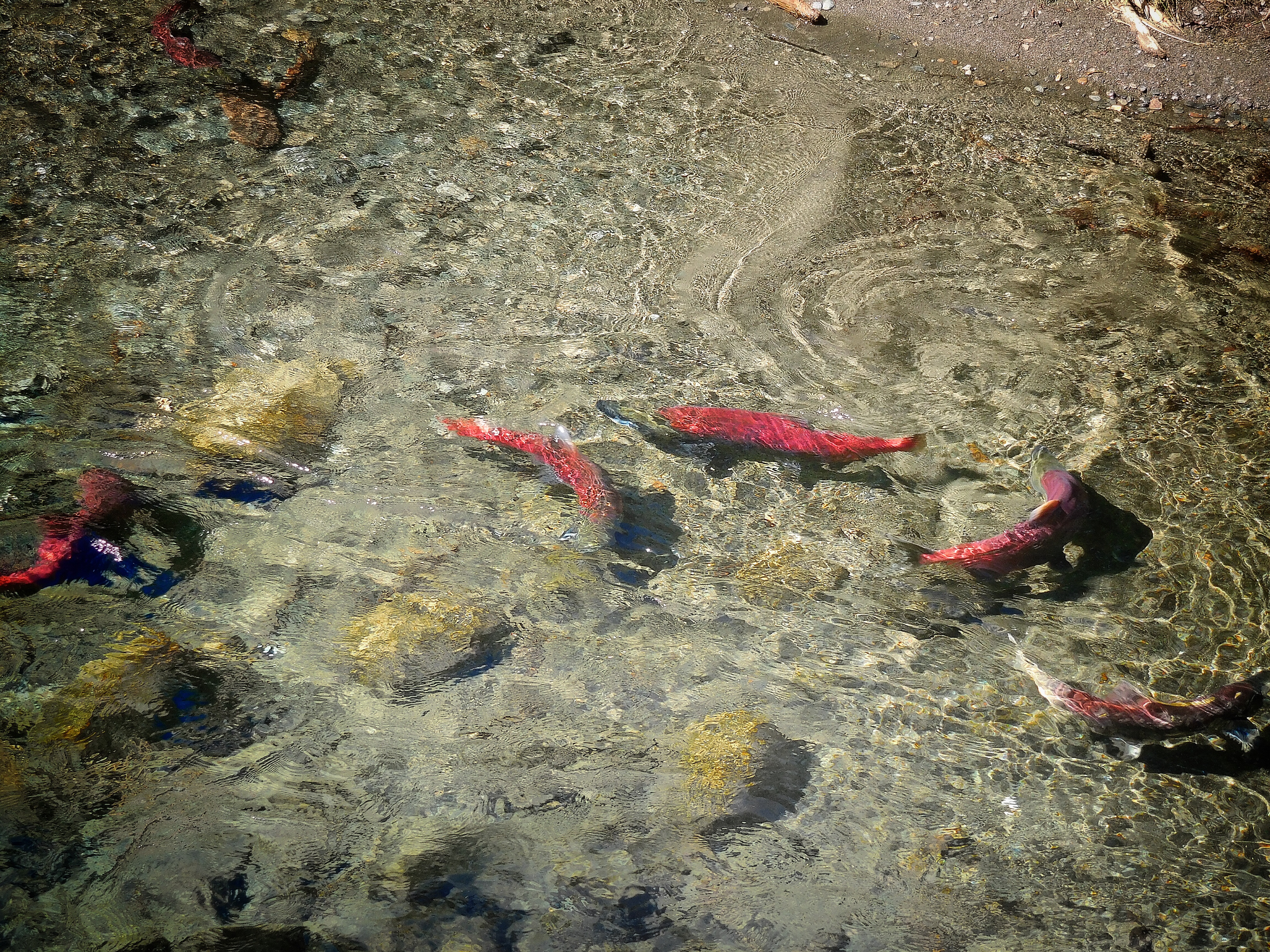
In these parts, bears wade in waters to catch salmon, and since there’s so much of it they can afford to “high-grade,” or eat only the fattiest parts of the fish and leave the half-eaten carcasses to rot. For the salmon, it’s a journey towards death, or I suppose, the circle of life and death. Salmon hatch, head to the sea, then migrate back from the sea to their natal waters to spawn, where they are subsequently eaten by bears or eventually die off after breeding. Here at the creek, a result of the retreated Mendenhall Glacier, they leave behind eggs to start the cycle of life all over again.
These life forms and landscapes in Alaska are varied and have been affected by glacial movements. In the retreating spaces of glaciers and from the winds that blow spores and seeds across ice fields emerge rich surrounding rain forests and lichen-cloaked cliffs…
Forest to Fjords: Exploring southeast Alaska’s landscapes
The brief walks we took through Alaska’s temperate rain forests were among the shortest, easiest, but most beautiful trails I have experienced. I had imagined dense, dry woods in Alaska, not the lush greenery that I actually witnessed; these rain forests were overgrown, damp, and cool, unlike their warmer, tropical counterparts. They also have fewer species of vegetation, and trees that are much older as well.

Icy Strait Point

We experienced the Tongass National Forest, America’s largest national forest, first in Hoonah (Icy Strait Point), when we walked a short trail behind the fishing village just around dusk. We had completed a whale-watching tour and had about an hour and a half more to spare before getting back to the cruise ship. Since the village is small, we had already walked through the gift shop and the cannery museum, so we found a nature trail behind the building to walk.
 Even though the path looped through the forest along the coast–very close to where the ship was docked and within earshot of other tourists– the moment we entered the woods, we couldn’t hear a thing. Silence and shadows engulfed us. So dense are these forests that they shield you from the outside elements. It felt like we had entered a completely different place, and for a moment, I hesitated to walk further because it was suddenly dark and quiet. However, I remembered that the trail was very short and close to civilization so it was completely safe.
Even though the path looped through the forest along the coast–very close to where the ship was docked and within earshot of other tourists– the moment we entered the woods, we couldn’t hear a thing. Silence and shadows engulfed us. So dense are these forests that they shield you from the outside elements. It felt like we had entered a completely different place, and for a moment, I hesitated to walk further because it was suddenly dark and quiet. However, I remembered that the trail was very short and close to civilization so it was completely safe.
I’m so glad that I proceeded.
Within just a few minutes, we reached a (relative) clearing where the sun’s rays managed to slice through the trees at just the right time, gilding the tree trunks and imbuing the forest in an aurous glow.

The soil under our feet was soft, and the tree roots and logs were covered in a spongy moss. I hate to say it, but it reminded me of a scene from the Twilight movies, except we weren’t being chased by vampires or werewolves. The Tongass covers most of southeast Alaska’s Inside Passage area, according to the USDA, and that’s why we could explore it at each and every stop along the cruise’s path.
Within moments, we were back along the rocky shore in front of the cruise ship, but that brief walk through the trees left a lasting impression.

Misty Fjords
In Ketchikan, we took a smaller “cruise” to the Misty Fjords National Monument through the coastal parts of the Tongass National Forest. We kept our eyes peeled to catch whales, otters and seals in the water, and scoured the treetops for bald eagles perched in the branches.

If you’re wondering what a fjord is, imagine the Sierra Nevada range, except the escarpments drop sharply down to a narrow inlet of water. Here, carpeted cliffs thrust to the skies from the sea, and cruising through the fjords, I could see why John Muir once described these cliffs as the “Yosemite of the north.”

After all, the same forces that shaped Yosemite’s features have shaped the fjords here as well: Carved by glaciers, many of the smooth, steep rock faces near Ketchikan resembled Yosemite’s Half Dome and El Capitan. Even the approach into the fjords reminded me of Tunnel View.

Juneau
In Juneau, on the lookout for bears, we explored the forests once again by foot near the Mendenhall Glacier.

Currently, the glacier’s terminus is located 10 miles from downtown Juneau, but it wasn’t always that far away. We walked through the Tongass on the Trail of Time, so named because this roughly 1-mile loop takes you through a path that was once covered by ice, demonstrating various stages of the glacier’s retreat through the ages, and evidence of global warming’s impact.

This 13-mile long glacier has been melting into the Mendenhall Lake below, where tourists now kayak the waters. In 2016, University of Alaska, Fairbanks researchers reported that by the end of the century, people would no longer able to see the glacier’s terminus from the visitor’s centers, which is close to the view point where we viewed the glacier.
The Mendenhall is one of 38 glaciers flowing from the 1,500 square mile Juneau Ice Field, according to Alaska’s tourism website.
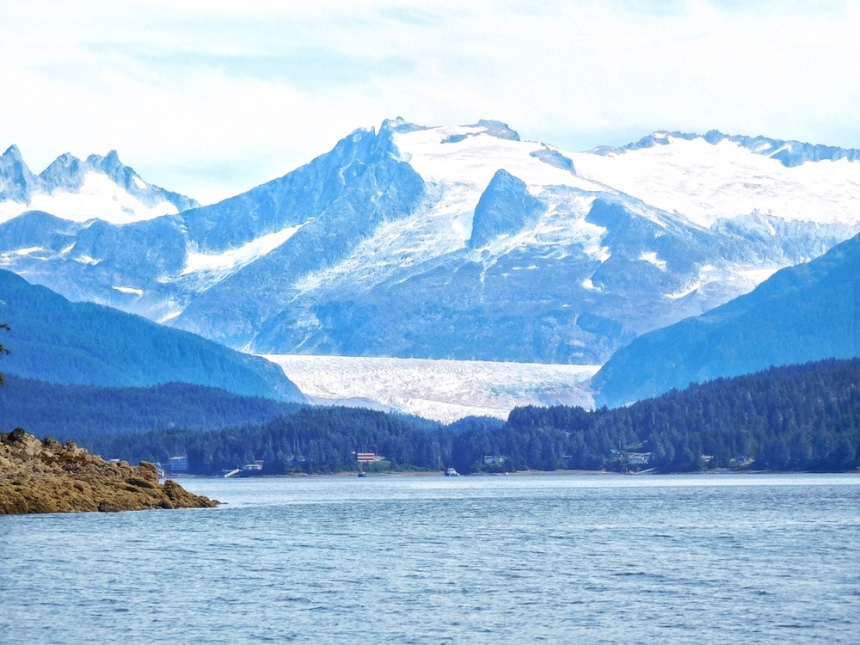
Walking the trail that day I saw firsthand how powerful glacial forces can be in forming surrounding ecosystems. In Alaska, ice and snow have not only shaped the landscapes, but also the way of life for the locals.
The Juneau Ice Field

The Juneau Ice Field was by far the most impressive sight I experienced during our cruise vacation in Alaska.
Hovering above the furrowed ridges that peer from a pillowy sheath of snow, you catch a glimpse of the primitive: an Alaska that is far more vast, sequestered and unstirred by outside forces. This sheltered landscape is a realm of its own.

Prior to our plane ride, our photo safari tour guide told us that even though the state’s capital seems to be relatively developed– with shops, government buildings and restaurants– this part of Alaska is so remote that its residents have to use planes or boats to get to other parts of the state. Some areas are just shielded. They are isolated because it is impossible to build roads over moving ice, and the Juneau Ice Field is evidence of that. The floatplane excursion over the field was worth every penny of the $400+ (two people) we spent for it.

In some parts, the corrugated stretch of ice resembles the twists of a river: The fissures, which contain hundreds of feet of compacted snow over time, appear a bright blue due to the the light refracted from dense snow particles. They have squeezed out air bubbles through the ages.

Life in Alaska is slower and more secluded than in the lower states. Residents plan grocery store visits based on the days the store gets fresh shipments of food. Many jobs are seasonal, and the region has experienced an overall downturn in recent years with the drop in oil prices, he said. The people enjoy the outdoors, retreating to the mountains, forests and lakes to spend their free time. For awhile, the only high school in town had to have intramural sports because there weren’t any other teams to play, until a second high school opened, he said. That’s just life in Alaska.

After the whale-watching and Mendenhall excursion, Jis and I walked along the streets of Juneau, checking out the many souvenir and jewelry shops near the port, and even trying some local beer. The shops here primarily cater to cruise ship visitors. Tourism is the second largest source of employment in Alaska, according to the resource development council. Beyond a souvenir spoon and miniature totem pole figurine resembling those carved by the local Tlingit (pronounced clink-it) tribe of Alaska, we purchased nothing. We were just killing time before our late afternoon floatplane ride. Finally, 3 p.m. rolled around, and it was time to board the floatplane.

The plane seated about 10 people, two seats per row, and we were each provided a seat of headphones through which we received pre-recorded information about the sights below.

From the skies, the dynamics are clear: although frozen, this landscape has been anything but still. The field is 3,000 years old, but here, the ice remains young because it constantly replenishes itself. Coils and deep crevasses indicate that the glaciers in these valleys are on the move (and ironically, reminded me of the serpentine folds trapped in the hardened lava rock of Hawaii).
Don’t for a second think that the peaks are barren, either. They, like the neighboring coastlines and forests, are thriving with life forms such as fungi, shrubs and insects. Since glaciers advance and retreat, vegetation eventually replaces ice on the rocks. In fact, students and professional researchers of the Juneau Ice Field Research Program have been studying changes in the ice field, glacial movements, and life forms along the folds of the mountains.
Looking down on one side of the range, you can see grassy valleys bordering bodies of water, and on the other, the rugged rock faces, draped in white pleats.

It’s these diverse landscapes that coexist side by side that make Alaska such a mystifying frontier.
I’m grateful to have been introduced to Alaska’s mountain ranges, wilderness and waters through the one-week cruise. My family and I enjoyed ourselves onboard, and it was thrilling to witness Alaska’s geography, ecosystems, people and lifestyle in person. I can’t wait to go back to explore further. If this small strip of just southeast Alaska could be so captivating, surely the “great land” must contain far more alluring gems within its depths.

Related Posts
-
7 Essential Steps for Planning a Cruise Vacation
-
5 Ways to Make Fit Feel Fabulous While Cruising
-
A Beginner’s Guide to Alaska: Why Cruising is Just the Tip of the Iceberg
-
Viewing Wildlife: A Beginner’s Guide to America’s Last Frontier
-
Forests to Fjords: A Beginner’s Guide to Southeast Alaska’s Landscapes
-
Teton to Tongass: A Summer Spent Searching for Bears





